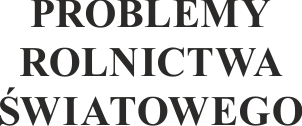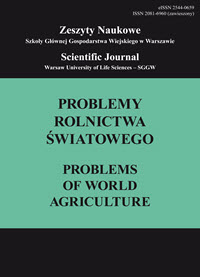Main Article Content
Article Details
Adams, R.H., Page, J. (2005). Do international migration and remittances reduce poverty in developing countries? World Development, 33(10), 1645-1669.
Adewuyi, A.O., Ogebe, P.O. (2019). Rural infrastructure development and poverty alleviation in Nigeria. Journal of Infrastructure Development, 11(2), 105-120.
Aruofor, R.O., Ogbeide, D. (2024). An Escalating Analysis of the Role, Impact and Ramification of Investment in the Nigerian Economy and Outlook to Year 2035. PDF Link
Ayanwale, A.B., Adekunle, A.A., Kehinde, A.D., Fatunbi, O.A. (2024). Networking and Training for Improvement of Farm Income: A Case of Lifelong Learning (L3F) Approach in West Africa. PDF Link
Beegle, K., Christiaensen, L., Dabalen, A., Gaddis, I. (2016). Poverty in a rising Africa. Washington, DC: The World Bank.
Bigsten, A. (2024). Atkinson on Inequality. Inequality: Economic and Social Issues, 95-111.
Chinyoka, I. (2023). Ending poverty on the African continent: consolidating the agrarian welfare regime in Zimbabwe. In: Poverty, Inequality, and Innovation in the Global South (pp. 285-306). Cham: Springer International Publishing.
Deininger, K., Squire, L. (1998). New ways of looking at old issues: Inequality and growth. Journal of Development Economics, 57(2), 259-287.
Ellis, F., Biggs, S. (2001). Evolving themes in rural development 1950s–2000s. Development Policy Review, 19(4), 437-448.
Idiku, F.O. (2024). Response of Rural Farmers to the Effects of Climate Change in Cross River State Nigeria.
Kanbur, R., Squire, L. (1999). The evolution of thinking about poverty: Exploring the interactions. In G. Meier & J. Stiglitz (Eds.), Frontiers of Development Economics: The Future in Perspective (pp. 183-226). New York: Oxford University Press.
Komolafe, M.A., Ayodele, K.P., Olaogun, M.O.B. (2024). Africa Region: Nigeria.
Madaki, M.J., Owoade, E.O., Hassan, B.K., Muhammed, H.K. (2024). Assessing climate change perceptions and adaptation strategies among sesame farmers in Yobe State, Nigeria. Asian Research Journal of Agriculture, 17(2), 309-317.
Madu, I.A. (2010). The structure and pattern of rurality in Nigeria. GeoJournal, 75(2), 175-184.
Musa, U.F., Mohammed, S.U. (2024). Perceptions of Care-givers on the Phenomenon of Child Poverty in Bauchi State of Nigeria.
Nechifor, V., Ramos, M. P., Ferrari, E., Laichena, J., Kihiu, E., Omanyo, D., Musamali, R., Kiriga, B. (2021). Food security and welfare changes under COVID-19 in Sub-Saharan Africa: Impacts and responses in Kenya. Global Food Security, 28, 100514.
Ogbonna, S., Oji, E. (2020). Rural development policies and strategies in Nigeria: The missing gaps. International Journal of Scientific and Engineering Research, 11(6), 1456-1470.
Oyedepo, J.A., Irekhore, O.T., Bello, K.O., Olaoye, O.J., Lala, A.O., Oluwalana, E.O., Oyedepo, E.O., Omotayo, A.M. (2020). Livelihood Support Programmes for Sustainable Development Goals in Rural Nigeria. Sustainable Development Goals and Institutions of Higher Education, 155-168.
Ravallion, M. (2009). A Comparative Perspective on Poverty Reduction in Brazil, China, and India. World Bank Research Observer, 24(1), 71-104.
Sadiq, M.S., Singh, I.P., Ahmad, M.M. (2020). Rice yield differentials between IFAD participating and Non-Participating farmers in Nigeria's Niger state. Economic Affairs, 65(4), 559-573.
Sadiq, S., Sani, B.S. (2024). Inequality and social welfare status of paddy rice processors in Nigeria’s Jigawa State. Sustainability, Agri, Food and Environmental Research, 12(2).
Salifu, A., Kufoalor, K.M. (2024). Are cash transfer programmes effective at targeting people experiencing poverty in Sub-Saharan Africa? SN Business & Economics, 4(2), 24.
Sam, A.G., Abidoye, B.O., Mashaba, S. (2021). Climate change and household welfare in sub-Saharan Africa: empirical evidence from Swaziland. Food Security, 13(2), 439-455.
Schmidt, E., Pacek, A.C., Radcliff, B. (2024). The Welfare State and Human Well-Being Around the World: A Cross-National Analysis. Applied Research in Quality of Life, 19(1), 365-380.
Shikur, Z.H. (2020). Agricultural policies, agricultural production and rural households’ welfare in Ethiopia. Journal of Economic Structures, 9(1), 50.
Singh, S.V.P., Shrotryia, V.K. (2022). Income Inequality and Human Wellbeing: An Empirical Analysis Using Atkinson Measure of Inequality. Emerging Economy Studies, 8(2), 116-128.
Teka, A., Lee, S.K. (2020). Do agricultural package programs improve the welfare of rural people? Evidence from smallholder farmers in Ethiopia. Agriculture, 10(5), 190.
Thorbecke, E. (2013). The interrelationship linking growth, inequality, and poverty in Sub-Saharan Africa. Journal of African Economies, 22(suppl_1), i15-i48.
Ucha, C. (2010). Poverty in Nigeria: Some dimensions and contributing factors. Global Majority E-Journal, 1(1), 46-56.
Umar, M.B. (2024). Climate change awareness, perception, and adaptation strategies for small and marginal farmers in Yobe State, Nigeria. In: Sustainability of Natural Resources (pp. 148-163). CRC Press.
United Nations Development Programme (UNDP) (2018). Human Development Indices and Indicators: 2018 Statistical Update. New York: UNDP.
Warinda, E.M., Nyariki, D., Wambua, S., Muasya, R. (2020). Impact of smallholder farmers’ welfare through participation in on-farm regional projects in East Africa. Agrekon, 59(1), 16-29.
World Bank. (2007). Agriculture for Development. World Development Report 2008. Washington, DC: The World Bank.
Zou, H. (2024). The social welfare effect of environmental regulation: An analysis based on Atkinson social welfare function. Journal of Cleaner Production, 434, 140022.
Downloads
- Mohammed Sadiq, Muhammad Ahmad, Mahmood Bala, Invinder Singh, Food Insecurity Resilience Capacity of Rural Households in the Face of Induced-Weather Extremities in Bauchi State of Nigeria , Zeszyty Naukowe SGGW w Warszawie - Problemy Rolnictwa Światowego: Tom 23 Nr 3 (2023)
- Mohammed Sadiq, Musa Salihu, Bashir Sani, Prospects of Small-Scale Rice Processing Enterprise among Beneficiaries of Microfinance Loan in Nigeria’s Jigawa State , Zeszyty Naukowe SGGW w Warszawie - Problemy Rolnictwa Światowego: Tom 24 Nr 2 (2024)
- Mohammed Sanusi Sadiq, Muhammad Ahmad, Emmanuel Gama, Abbas Sambo, Morbidity Cost and Willingness to Pay for Healthcare Insurance among Wheat Farmers in Jigawa State of Nigeria , Zeszyty Naukowe SGGW w Warszawie - Problemy Rolnictwa Światowego: Tom 24 Nr 1 (2024)
- Mohammed Sadiq, Muhammad Ahmad, Invinder Singh, Bashir Sani, Mitigating the Effects of Armed Banditry on Poverty: Policy Strategies for Sustainable Development in the North-West Region of Nigeria , Zeszyty Naukowe SGGW w Warszawie - Problemy Rolnictwa Światowego: Tom 25 Nr 1 (2025)

Utwór dostępny jest na licencji Creative Commons Uznanie autorstwa – Użycie niekomercyjne 4.0 Międzynarodowe.





